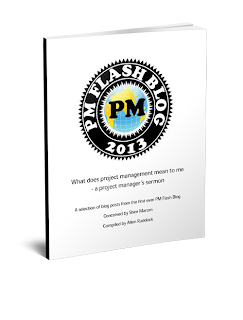A recent conversation, a contractor's lament:
[In the business of ] developing complex IT systems for [public sector agencies], there is an asymmetrical understanding of the risk involved, between the supplier and customer."Asymmetrical understanding"! Is this a new meme-wanna-be in PMO? Could be; asymmetrical is certainly a meme in the warfighter's planning domain. In any event, I was struck by the phrase.
Our complex systems have many system interdependencies and potential failure points. There are many uncertain environmental variables, such as changing regulations.
All of this leads to large inherent risks. Yet the [agencies] have limited funding and a very low tolerance for risk.
Here's my experience (after many years in the public/private relationship): the customer (public agency) wants to bottom line it; the project office wants them -- the customer -- to understand the details (insert here: frustration!) but the capacity and the interest to understand the details are just not there. Most particularly this is so when there's political pressure -- unwitting of the facts -- and unwilling to know the facts.
So, to the popular idea of "should've known, could've known, didn't know" you can add "unwilling to know", "incapable of knowing" and -- perhaps the worst of all -- deliberately ignoring "what I do know because it's inconvenient". Thus: the classic "inconvenient truth".
Read in the library at Square Peg Consulting about these books I've written
Buy them at any online book retailer!
Read my contribution to the Flashblog




